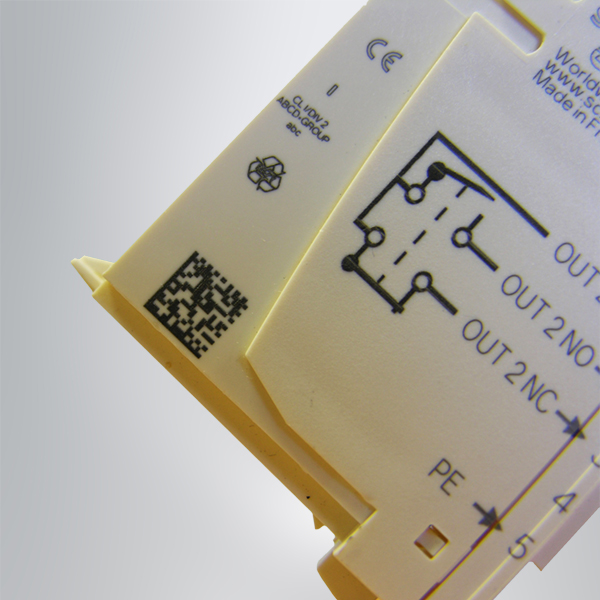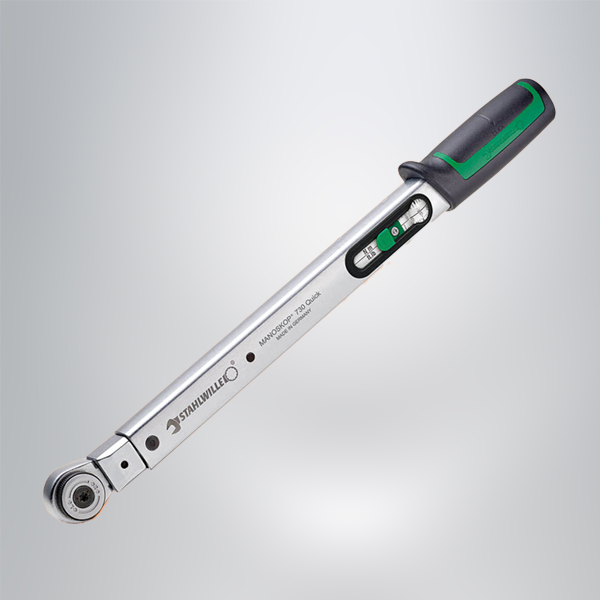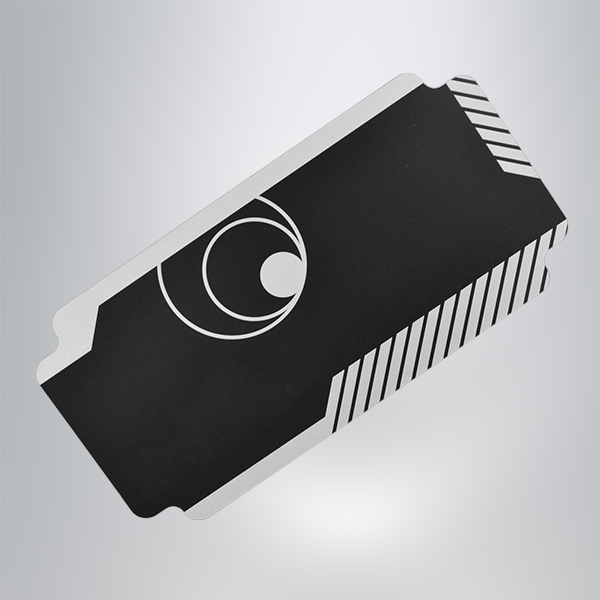Laser marking and engraving
Laser marking is a proven printing technique. Laser marking includes the following processes: laser engraving, selective laser ablation, annealing, laser decolourisation and foaming. These techniques are chosen according to the materials and the marking application required.
The addition of decorations, logos, designs, datamatrix, QR codes, barcodes, serial numbers and text fields makes this versatile technique indispensable for industrial marking. ES LASER is specialised in the design and manufacture of high technology lasers and laser marking machines for industrial environments. Our range of products, covering the entire light spectrum (from ultraviolet to infrared), enables us to offer our customers laser marking solutions whatever their requirements or materials: metals, plastics, wood, glass, ceramics, rubber, paper, cardboard, etc. Our specialists have developed laser systems dedicated to easy integration on production lines.

Laser marking of plastics

Laser marking and engraving of metals

Anodised aluminium laser marking
Laser marking has many advantages. It does not require any consumables (inks, labels, solvents, acids, etc.), which allows industrialists to carry out laser marking in an environmentally friendly and safe manner. Laser marking is permanent and of high definition; the techniques used by our specialists are versatile and designed for industrialists: speed of execution of marking up to more than 1,000 characters per second and reduced maintenance (MTBF > 100,000 h for fiber laser sources).
Laser marking is possible on areas inaccessible to conventional techniques.
Laser marking using the annealing technique
This laser marking technique allows work to be carried out without ablation of the material. As the laser beam passes through, the material is locally heated to a temperature close to its melting point. The thermal effect of this heating causes a change in colour, producing the marking of the material. Several colours can be produced depending on the exposure time, the power and speed of the laser, and the nature of the oxides in the material.
Laser marking by annealing concerns metals and plastics, in particular titanium and ferrous metals (steel, stainless steel, etc.) and PVC.
Laser marking using the photosensitive technique
In the case of discolouration laser marking, the marking is created by thermal effect: the plastic is rapidly heated, and a colour change follows the path of the laser beam. The marking can be dark or light, depending on the composition of the plastic. During the manufacture of the plastic, the addition of specific pigments can determine the colouring allowed by the laser marking.
Laser marking by decolourisation is only done on plastics, and the colour of the marking depends mainly on their composition.
Laser marking using the foaming technique
In the foaming technique, the material is melted by the energy input from the laser beam. This results in the formation of small gas bubbles on the surface of the material, giving a foam-like appearance and reflecting the light diffusely. This laser marking technique provides good visual contrast, especially on dark plastics.
As with decolourisation, the laser foaming technique can be applied to plastics such as polycarbonates.
Laser marking using the engraving technique
This marking technique allows for the creation of deep impressions. The focused, high-powered laser beam melts and then evaporates the material to be treated, creating a “hollow”, the engraving, on the surface. Depending on the nature of the material treated, it is also possible to generate a colouring or reflections improving the visibility of the marking.
Laser engraving can be applied to all materials: metals, glass, wood, etc.
Laser marking using the selective ablation technique
Laser marking by material ablation consists of removing, by vaporization, an overcoat (paint, anodising, varnish, etc.), covering the part to be treated.
Selective ablation is applied to all materials with an overlay.

